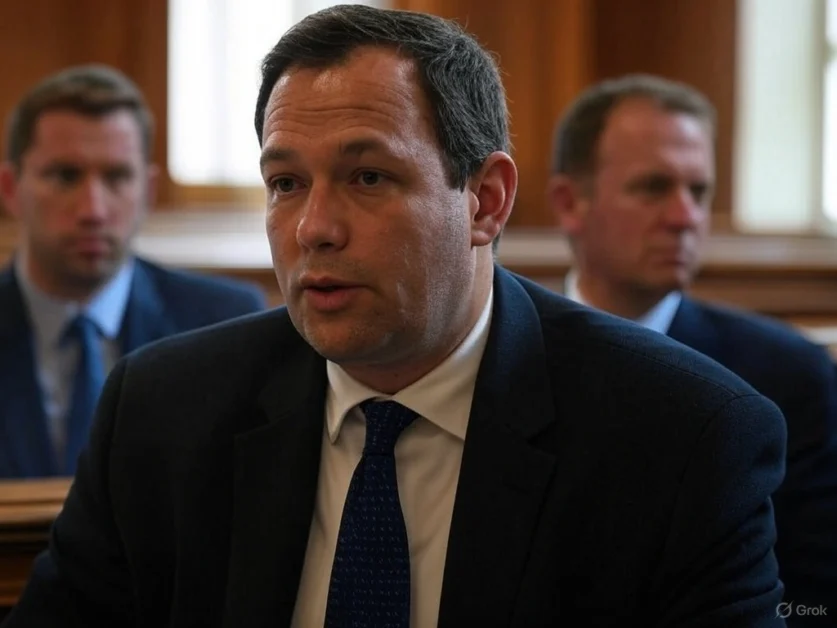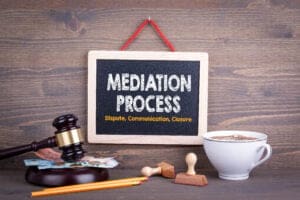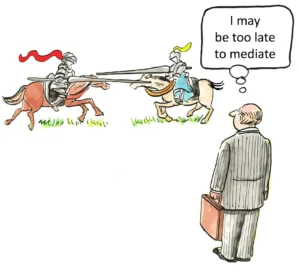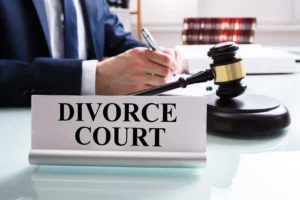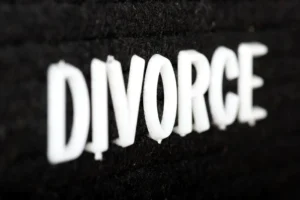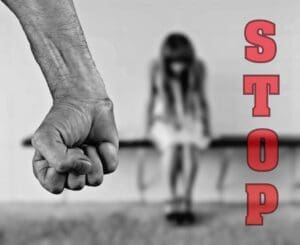Voir Dire Questions: Selecting Favorable Jurors for Your Case
The process of voir dire stands as one of the most consequential stages in any trial, shaping the very foundation upon which justice is administered. At its core, voir dire is about asking the right questions—voir dire questions that reveal the subtle biases, life experiences, and attitudes of potential jurors. For attorneys, this is the critical opportunity to ensure that those who will ultimately decide the case are capable of rendering a fair and impartial verdict. The art of selecting favorable jurors is not about stacking the deck, but about removing those with prejudices so deep or experiences so personal that impartiality is impossible. In a system that prizes the presumption of innocence and the right to a fair trial, the voir dire process is the first and best safeguard against injustice.
The phrase “voir dire” means “to speak the truth,” and that is precisely what attorneys seek from prospective jurors. The courtroom is not a place for guesswork or hopeful assumptions about human nature. Instead, it is a venue for careful, strategic inquiry. Attorneys must use their limited time to ask pointed, open-ended questions that encourage jurors to reveal not only their overt beliefs but also the unconscious biases that might color their judgment. The best practitioners understand that every juror brings a lifetime of experiences into the box, and the challenge is to identify which of those experiences might tip the scales unfairly. This is not a task for the faint of heart or the inattentive; it demands preparation, intuition, and a willingness to listen as much as to speak.
Jury selection strategies begin long before the panel is called. Effective attorneys come to voir dire armed with a thorough analysis of the case, a clear understanding of the legal issues at stake, and a list of the types of juror biases that could threaten their client’s position. This preparation is not just about knowing the facts, but about anticipating how those facts might be received by people from different walks of life. For example, in a medical malpractice case, an attorney might be wary of jurors with strong opinions about the healthcare system, while in a criminal case, prior experiences with law enforcement could be decisive. The voir dire process is the time to surface these attitudes, not to hope they remain hidden.
The mechanics of voir dire vary across jurisdictions, but the goals remain constant: to identify and remove jurors who cannot be fair, and to seat a panel that will judge the case on the evidence and the law. Attorneys are equipped with two primary tools for this task: challenges for cause and peremptory challenges. Challenges for cause allow the removal of any juror who demonstrates clear bias, a conflict of interest, or an inability to follow the law. There is no limit to the number of challenges for cause, but judges are the gatekeepers, making the final decision on whether a juror is excused. These challenges are reserved for the most obvious cases—those where a juror openly admits to prejudice or a personal connection to the case.
Peremptory challenges are more limited but no less important. Each side is granted a set number of these strikes, which can be used to remove jurors for almost any reason, except those prohibited by law, such as race or gender. The strategic use of peremptory challenges is an art form, requiring attorneys to make quick judgments about which jurors might harbor hidden biases or whose body language and demeanor suggest an unwillingness to be persuaded by the evidence. In recent years, courts have scrutinized the use of peremptory challenges, seeking to prevent their misuse and to uphold the principle of equal protection under the law. Attorneys must be mindful of these developments, ensuring that their strategies are both effective and ethical.
The heart of voir dire lies in the questions themselves. Voir dire questions must be crafted to elicit honest responses, not rehearsed answers. Open-ended questions are essential, as they invite jurors to share their thoughts and experiences in their own words. For example, rather than asking, “Can you be fair in this case?”—a question almost every juror will answer in the affirmative—savvy attorneys might ask, “Tell me about a time when you had to make a difficult decision based on conflicting information.” This approach encourages jurors to reveal how they process uncertainty and whether they are comfortable with ambiguity, a key trait in complex trials.
Attorneys must also be attentive to the dynamics of the jury pool. In high-profile cases, media coverage and public opinion can seep into the courtroom, shaping the perspectives of potential jurors. Questions about exposure to news reports, social media discussions, or community sentiment are critical in these situations. The goal is not to exclude every juror with an opinion, but to ensure that those opinions do not prevent a fair evaluation of the evidence. Attorneys must walk a fine line, probing for bias without alienating the panel or appearing to “coach” jurors toward a particular answer.
Modern voir dire also requires an understanding of the impact of group dynamics. Some attorneys prefer individual questioning, which allows for deeper exploration of each juror’s attitudes, while others favor group voir dire, which can reveal how jurors influence one another. In either case, the attorney’s role is to foster an environment where jurors feel comfortable speaking candidly. This may involve explaining the process, acknowledging that everyone has biases, and reassuring jurors that there are no right or wrong answers. The best practitioners approach voir dire as a conversation, not an interrogation, building rapport and trust from the outset.
The rise of digital technology has added new dimensions to voir dire. Attorneys now routinely conduct background research on jurors, reviewing social media profiles, public records, and online activity for clues about attitudes and affiliations. While this information can be invaluable, it must be used judiciously and within the bounds of ethical rules. The goal is not to invade privacy, but to ensure that the jury is composed of individuals who can judge the case impartially. Attorneys should be prepared to address any findings from digital research during voir dire, using targeted questions to confirm or dispel concerns about bias.
One of the most challenging aspects of voir dire is addressing sensitive topics. Cases involving race, religion, sexual orientation, or deeply held beliefs require a deft touch. Attorneys must ask questions that surface potential biases without causing embarrassment or defensiveness. For example, in a case involving law enforcement, questions about prior experiences with police can reveal attitudes that might influence deliberations. In cases involving children, questions about parenting or personal experiences with similar situations can be revealing. The key is to frame questions in a way that respects the dignity of the jurors while uncovering the information necessary for a fair trial.
Impartial jury selection is not about finding jurors who are blank slates; it is about finding those who can set aside their preconceptions and judge the case on its merits. Attorneys must be vigilant for signs of inflexibility or strong emotional reactions, as these can signal an inability to be fair. At the same time, they must recognize that life experience is not the enemy of impartiality. Jurors who have faced adversity, made difficult decisions, or overcome challenges may bring valuable perspectives to the deliberation room. The goal is to seat a jury that reflects the diversity of the community while remaining committed to the principles of justice.
The voir dire process is also an opportunity for attorneys to begin shaping the narrative of the case. By introducing key themes and concepts during questioning, attorneys can lay the groundwork for arguments that will be developed during trial. For example, in a case involving complex financial transactions, questions about jurors’ familiarity with business or accounting can both identify potential biases and prepare the panel for the evidence to come. In criminal cases, questions about the presumption of innocence, the burden of proof, and the meaning of “beyond a reasonable doubt” can reinforce the legal standards that will govern the trial.
Attorneys must also be mindful of the time constraints imposed by the court. In many jurisdictions, voir dire is a fast-moving process, with limited opportunities for follow-up questions or extended dialogue. This reality requires careful prioritization of the most important issues and the ability to adapt on the fly. Attorneys must listen actively, noting not only what jurors say but how they say it—the tone of voice, body language, and nonverbal cues that can reveal hidden attitudes. The best practitioners are those who can think on their feet, adjusting their approach as new information emerges.
The use of hypothetical scenarios is another powerful tool in voir dire. By presenting jurors with situations that mirror the issues in the case, attorneys can gauge how they might react to the evidence. For example, in a personal injury case, a question like, “How would you feel if you were asked to decide a case where both sides present credible evidence?” can reveal whether a juror is comfortable with ambiguity or inclined to favor one side based on sympathy. These scenarios also provide a window into the juror’s decision-making process, offering valuable insights for both challenges for cause and peremptory challenges.
Courtroom tactics during voir dire extend beyond the questions themselves. Attorneys must demonstrate respect for the court, the opposing counsel, and the jury pool. Sarcasm, aggression, or dismissiveness can alienate jurors and undermine credibility. Instead, attorneys should strive for professionalism, courtesy, and a genuine interest in the perspectives of the panel. This approach not only fosters goodwill but also encourages jurors to be more forthcoming in their responses.
The broader legal landscape has also shaped the voir dire process. Recent reforms in some jurisdictions have expanded attorney-conducted voir dire, giving lawyers greater latitude to question jurors directly. These changes reflect a recognition that attorneys are best positioned to identify the nuances of bias and to tailor questions to the specifics of the case. However, with greater responsibility comes greater scrutiny, and attorneys must be prepared to justify their questions and to avoid any appearance of impropriety.
The challenge of juror bias questions is not limited to explicit prejudice. Implicit bias—those unconscious attitudes that shape our perceptions and decisions—can be just as powerful. Attorneys must be alert to the possibility that jurors may not even be aware of their own biases, or may be reluctant to admit them. Questions that explore attitudes toward authority, personal responsibility, or trust in institutions can reveal underlying beliefs that might influence the outcome of the case. The goal is not to eliminate every juror with a point of view, but to ensure that those views do not prevent a fair and impartial verdict.
Attorneys must also be prepared for the possibility that some jurors will attempt to hide their biases, either out of a desire to serve on the jury or to avoid jury duty altogether. Careful questioning, attention to inconsistencies, and follow-up on vague or evasive answers are essential. In some cases, attorneys may need to rely on the judge to intervene, particularly when a juror’s responses raise concerns about honesty or candor.
The voir dire process is not without its critics. Some argue that it has become too adversarial, with attorneys seeking to manipulate the jury rather than to ensure fairness. Others contend that the process is too rushed, with insufficient time to uncover meaningful information about jurors. These concerns are valid, but they do not diminish the importance of voir dire as a bulwark against injustice. The solution lies in thoughtful, respectful questioning and a commitment to the principles of impartiality and due process.
In the end, voir dire questions are not just a procedural formality; they are the first line of defense against bias and the foundation of a fair trial. Attorneys who approach the process with preparation, integrity, and a willingness to engage with jurors as individuals are best positioned to select a panel that will judge the case on its merits. The stakes are high, and the consequences of a poorly selected jury can be profound. For those who value the rule of law and the right to a fair trial, mastery of voir dire is not optional—it is essential.
The legal profession must continue to refine and improve the voir dire process, embracing new tools and techniques while remaining faithful to the principles that have guided it for centuries. As society evolves and the challenges facing the justice system become more complex, the need for careful, thoughtful jury selection will only grow. Attorneys who understand the power of the right questions—and who use them wisely—will continue to play a vital role in upholding the integrity of the American legal system.
Voir dire is where the trial truly begins. It is the moment when attorneys move beyond the abstract and engage with the real people who will decide the fate of their clients. By asking the right questions, listening carefully, and selecting jurors who are both impartial and attentive, attorneys set the stage for justice to be done. In the pursuit of a fair trial, there is no substitute for a well-conducted voir dire.
Citations:
- How to Select a Jury Guide
- Winning Voir Dire Strategy with Strikes
- EBSCO Law Research on Voir Dire
- Clio Guide to Voir Dire
- Jury Selection for Litigation
- Voir Dire Case Studies and Thoughts
- Voir Dire Success Strategies
- Five Strategies for Effective Voir Dire
- 11 Tips for Conducting Voir Dire
- New Jersey Courts Jury Reforms
- Litify Voir Dire Resources
- How to Conduct Voir Dire
- Jury Selection Code Changes
- Optimizing Jury Selection Methods
- NY Courts Voir Dire Questions
- 11 Tips for Conducting Voir Dire
- Texas Bar on Jury Selection
- Voir Dire Strategy Insights
- Clio Guide to Voir Dire
- Removing Jurors During Voir Dire
- Checklist for Effective Voir Dire
- Jury Selection in 30 Minutes
- Six Considerations for Voir Dire
- Judge Advice on Voir Dire Process
- Special Issues in Voir Dire
- Tips for Voir Dire Discussion
- NACDL Voir Dire Guide
- Addressing Juror Bias Challenges
- Finding Low Competition Keywords
- Indiana Law Journal Article
- YouTube Video on Voir Dire
- Jury Race Study by SmithLehmann
- Juror Selection Process Guide
- Low Competition Keywords Guide
- Mastering Voir Dire Sample
- MSBA Model Voir Dire 2024
- California Voir Dire Report
- NCSC Voir Dire Guide
- ACLUNC Training on Voir Dire
- Jury Selection Combined Materials
- Maryland Voir Dire Packet
- NCSC Big Data Jury Study
- Everything About Voir Dire
- IMS Voir Dire and Jury Selection
- Jury Selection for Litigation
- Defend Youth Rights Voir Dire
- High Search Volume Keywords
- Guide to Low Competition Keywords
- Notre Dame Law Review Article
- How to Select a Jury Guide
- How to Conduct Voir Dire
